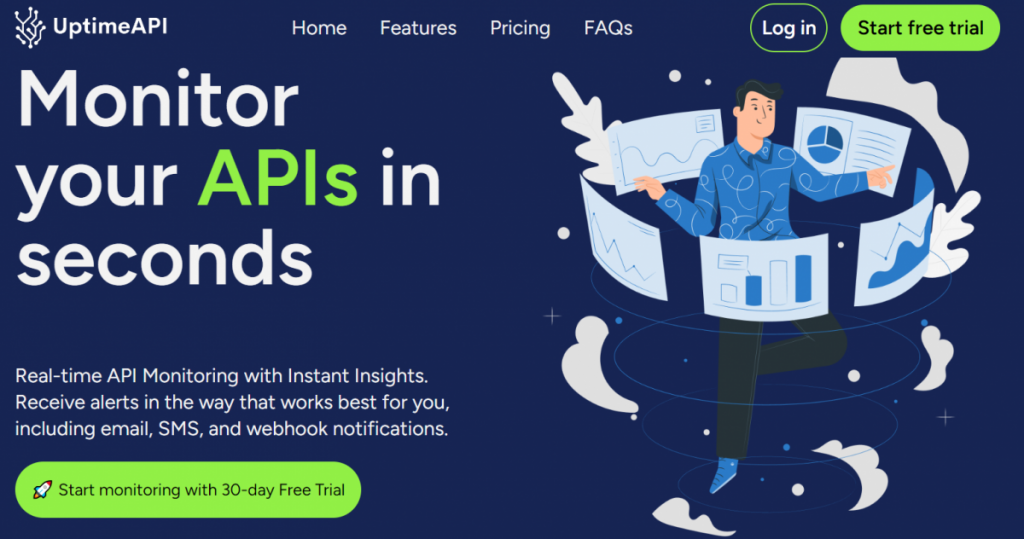In the ever-evolving landscape of cloud computing, ensuring the reliability and performance of APIs is paramount. With the increasing dependence on cloud services, businesses require robust tools to monitor the health and availability of their APIs. One such solution that has gained prominence in the field is UptimeAPI. In this article, we will delve into the significance of cloud API monitoring and explore the features and benefits offered by UptimeAPI.
The Importance of Cloud API Monitoring

1. Reliability and Performance Assurance
In the digital age, where downtime can translate to significant financial losses, monitoring the uptime and performance of APIs is crucial. Cloud API monitoring allows businesses to proactively identify and address issues before they impact users, ensuring a seamless and reliable experience.
2. User Experience Enhancement
APIs play a pivotal role in connecting applications and services. A suboptimal API can lead to a poor user experience, affecting customer satisfaction and retention. Monitoring helps in identifying bottlenecks, latency issues, and other performance-related issues that may degrade the user experience.
3. Data-Driven Decision Making
Monitoring API performance provides valuable insights into usage patterns, peak traffic times, and potential points of failure. This data enables organizations to make informed decisions regarding scaling, resource allocation, and infrastructure improvements.
Introducing UptimeAPI
What Sets UptimeAPI Apart?
UptimeAPI is a comprehensive cloud API monitoring solution designed to meet the diverse needs of modern businesses. Its features are tailored to provide real-time insights into API performance, ensuring that organizations can maintain a high level of reliability.
1. Real-Time Monitoring
UptimeAPI excels in real-time monitoring, providing instant alerts when an API endpoint experiences downtime. This proactive approach allows organizations to minimize service disruptions and respond swiftly to potential issues.
2. Customizable Alerting
Not all incidents are created equal. UptimeAPI allows users to customize alerting criteria based on specific parameters such as response time, error rate, and downtime duration. This flexibility ensures that teams are notified promptly about the issues that matter most to them.
3. Historical Performance Analytics
Understanding the historical performance of APIs is essential for identifying trends and planning for scalability. UptimeAPI offers robust analytics tools, allowing users to delve into historical data, track performance over time, and make informed decisions about infrastructure improvements.
API Response: Decoding the Language of UptimeAPI

When monitoring APIs, understanding the language of API responses is crucial. Let’s break down what an API response from UptimeAPI might look like:
{
"status": "success",
"timestamp": "2024-01-17T12:00:00Z",
"endpoint": "https://api.example.com",
"response_time": 50,
"error_rate": 0.1
}- status: Indicates whether the API request to UptimeAPI was successful.
- timestamp: Provides the date and time of the API response.
- endpoint: Specifies the monitored API endpoint.
- response_time: Represents the time taken for the API endpoint to respond (in milliseconds).
- error_rate: Indicates the percentage of requests that resulted in errors.
This concise JSON response offers a snapshot of the monitored API’s health, allowing for quick analysis and action.
Conclusion
In the dynamic world of cloud computing, where digital services are the backbone of modern businesses, ensuring the reliability and performance of APIs is non-negotiable. UptimeAPI emerges as a robust solution, offering real-time monitoring, customizable alerting, and historical analytics to empower organizations in maintaining optimal API performance.
Cloud API monitoring is not just a necessity; it’s a strategic advantage. By adopting tools like UptimeAPI, businesses can stay ahead of potential issues, provide a seamless user experience, and make data-driven decisions that propel them towards success in the digital era.
Read More: Company profile APIUsage Cases

